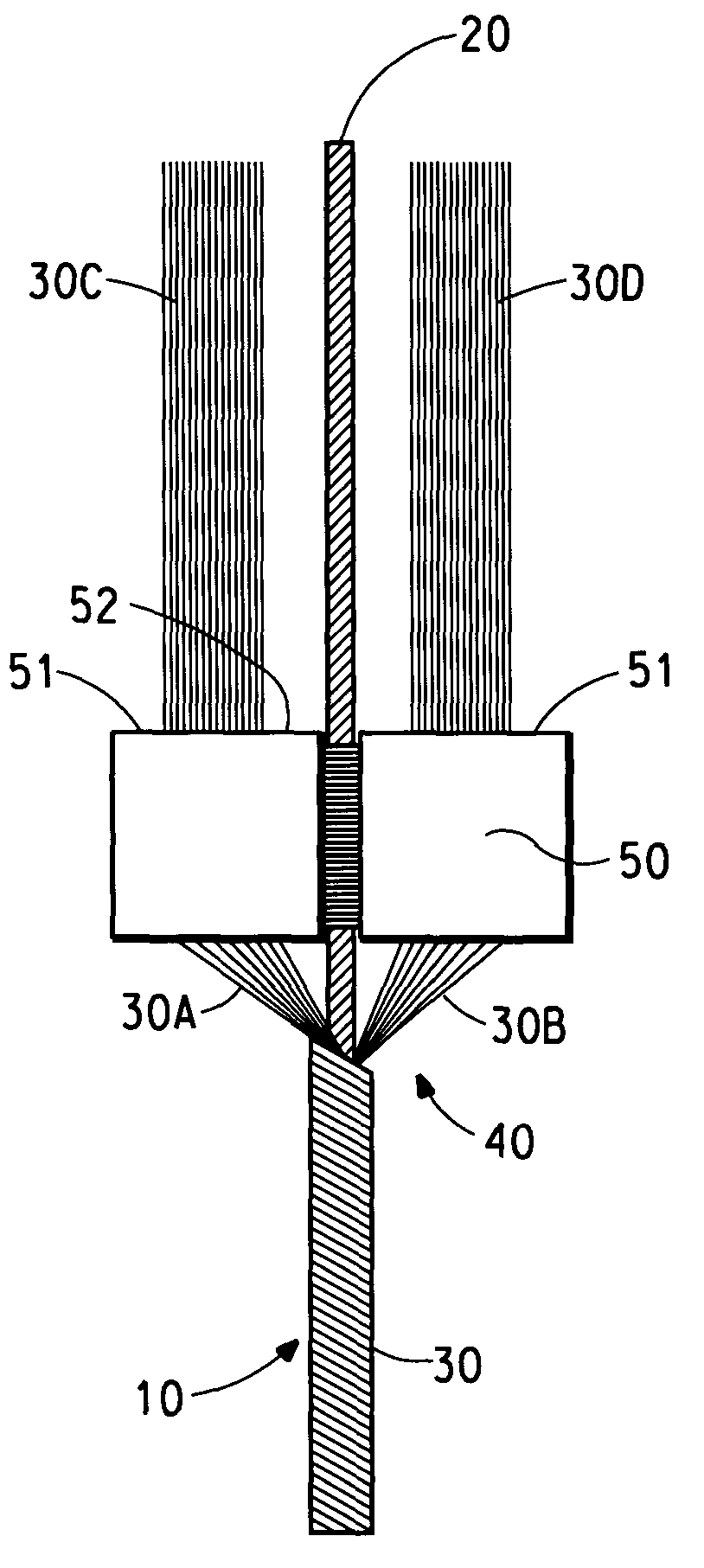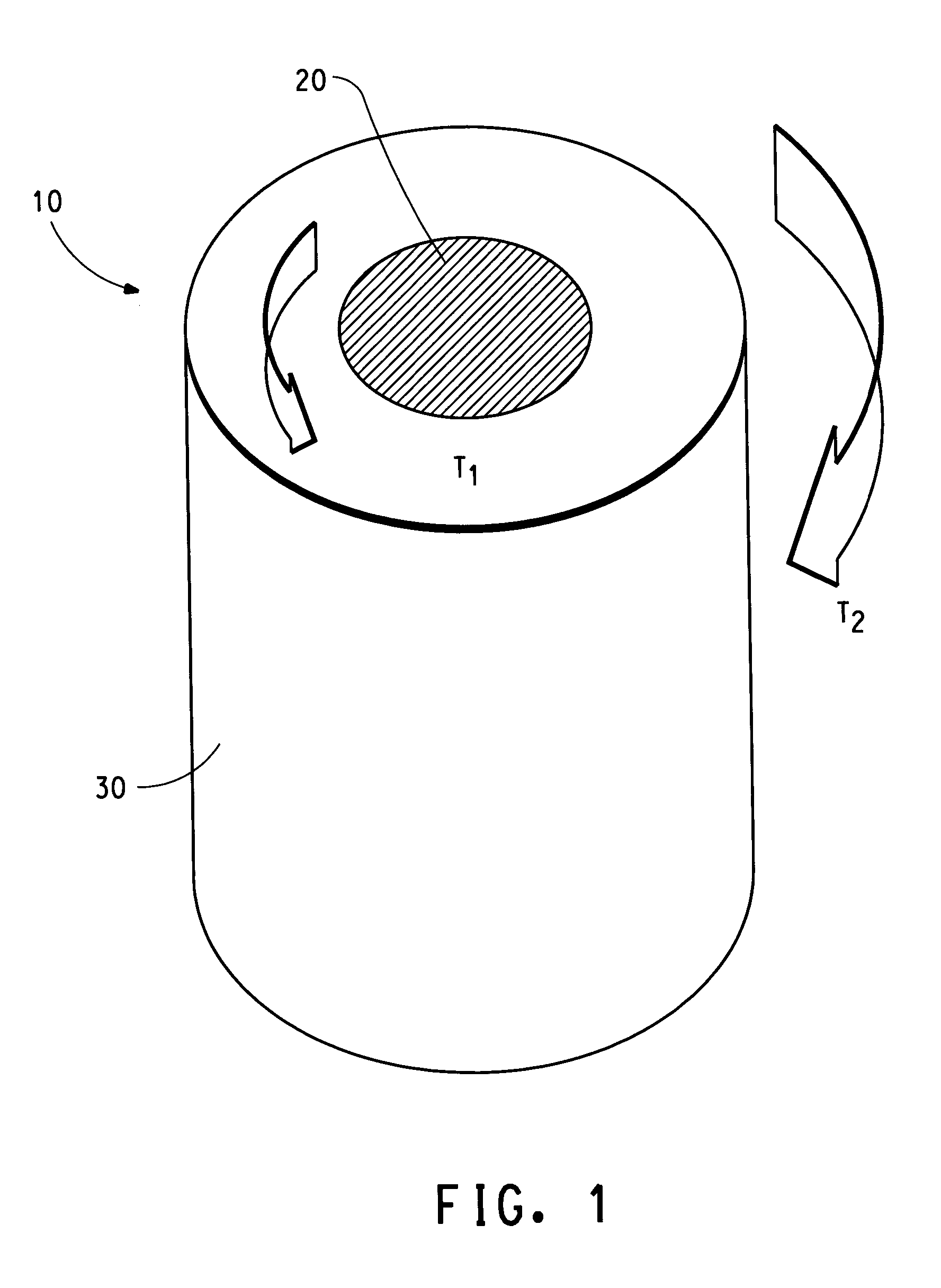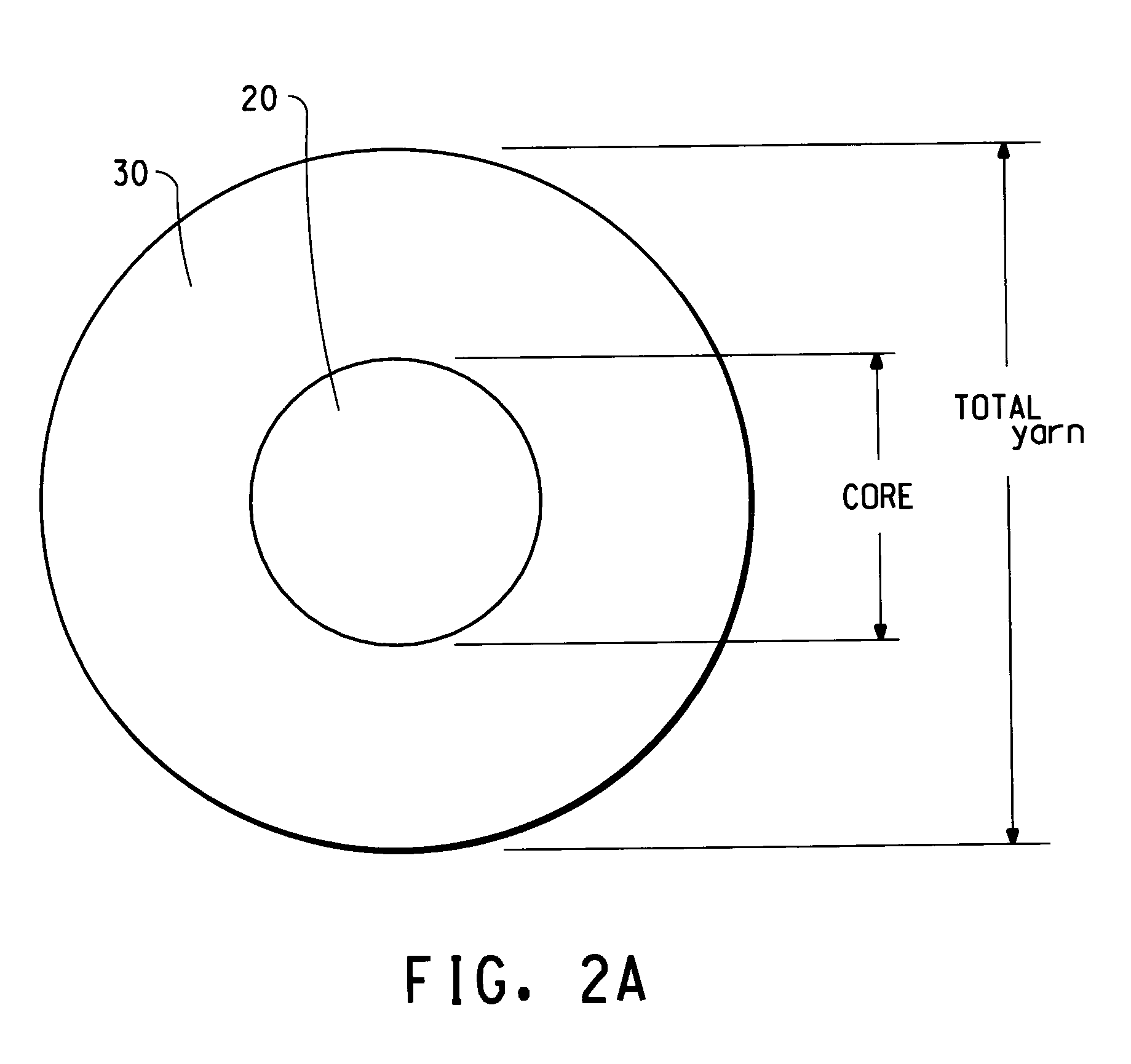Composite twist core-spun yarn and method and device for its production
a core-spun yarn and composite twist technology, applied in the field of composite twist core-spun yarn, can solve the problems of low core coverage, prone to jump and break, and prone to slipping and breaking of the core, and achieve the effect of no torqu
- Summary
- Abstract
- Description
- Claims
- Application Information
AI Technical Summary
Benefits of technology
Problems solved by technology
Method used
Image
Examples
example 1
[0070] This example was performed on a laboratory spinning machine, spinntester SKF 82 equipped with PK 600 type arms designed for long staple processing also called worsted spinning.
[0071] The core yarn (20) was a black KEVLAR® para-aramid spun yarn with 100 dtex (Nm 100 / 1). This core yarn was spun from stretch-broken KEVLAR® fibers having a length of approximately 100 mm, spun in the Z direction with 800 turns / meter. The yarn was previously steamed.
[0072] The covering fiber (30) was NOMEX® meta-aramid fiber with a cut length of approximately 100 mm. This fiber was prepared into two slivers of 6666 dtex (Nm 1.5) each. A Siro-spinning spacer was used. The machine was set with a pre-draft setting of 1.5 and a main draft of 22 according a lamination of the roving slivers from 6666 dtex down to 6666 / 1.5 / 22 =202 dtex.
[0073] The core yarn was positively fed at a speed of 16 m / min using a yarn-drive control system. For this, the core yarn was passed between a set of rolls driven at the...
example 3
[0080] Example 3 repeats Example 1 except for the fact that the core was a yellow KEVLAR®. The main draft value was adjusted to 28. Also the yarn tension of the spun yarn was slightly increased by using a different ring traveler.
[0081]FIG. 8A shows the resulting composite yarn, which is well covered, also practically 100%.
example 5
[0084] This Example was performed on a full-size commercial spinning machine specially adapted to operate according to this invention, to produce a high visibility composite yarn having a core (20) of poly (metaphenylene isophthalimide) (MPD-I) staple fiber and a covering (30) of crimped flame-retardant viscose (FRV) which is a regenerated cellulosic fiber incorporating a flame-retardant chlorine-free phosphorous and sulfur-containing pigment, available under the trademark “Lenzing FR”.
[0085] The FRV fibers had a staple cut length of approximately 5 to 9 cm and an average measured staple length of 6.8 cm. The FRV fibers were separately stock died in a high visibility yellow color. These fibers were prepared according to the conventional long staple processing also called worsted spinning into two fine roving slivers of 6666 dtex (Nm 1.5) each. A Siro-spinning spacer was used. The machine was set with a pre-draft setting of 1.5 and a main draft of 22 according a lamination of the ro...
PUM
 Login to View More
Login to View More Abstract
Description
Claims
Application Information
 Login to View More
Login to View More - R&D
- Intellectual Property
- Life Sciences
- Materials
- Tech Scout
- Unparalleled Data Quality
- Higher Quality Content
- 60% Fewer Hallucinations
Browse by: Latest US Patents, China's latest patents, Technical Efficacy Thesaurus, Application Domain, Technology Topic, Popular Technical Reports.
© 2025 PatSnap. All rights reserved.Legal|Privacy policy|Modern Slavery Act Transparency Statement|Sitemap|About US| Contact US: help@patsnap.com



